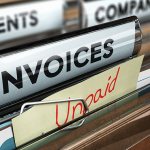Last modified on May 29th, 2018
By Laurie Lowe
Controlling residential rental market debt is something every property manager thinks about, especially when negotiating contracts with prospective clients. A certain amount of bad debt is just part of doing business. While you cannot, and should not, promise a guaranteed recovery rate, there are some strategies you can implement to control bad debt for owners and investors and maximize recovery results for your portfolio. Setting realistic expectations around recovery helps you develop a fiscally responsible business model, prepares you to educate your owners about an achievable rate of return target, and enables you to maintain positive client relationships.
Key Factors Affecting Recovery
Nationwide average recovery rates in the residential space tend to be very low and decrease as accounts age. The Association of Credit and Collection Professionals (ACA International), the largest trade association representing the debt collection industry, reported 9.9 percent average recovery of consumer accounts by third-party debt collection agencies in 2016. In other words, only 1 out of every 10 collection accounts are successfully recovered. Odds of recovery tend to diminish as accounts age. Studies conducted by the ACA conclude that for every 30 days an account remains unworked, it is 16 percent less likely to be collected. If you’re waiting until an account is 90, 180, or 365 days in arrears before turning it over to an external agency, you may be setting yourself up for disappointing results.
Higher balances also have much lower average liquidation, particularly if they include future rent or high penalties. One large national agency shared analysis representing debt recovery across 1.2 million residential units. What did it show? Collection rates are significantly higher on debts with smaller dollar balances. Balances below $500 averaged around 40 percent liquidation. Balances around $1,500 drop considerably to 15 percent average liquidation and recovery shrinks to average 3 to 6 percent on balances greater than $4,000. High balance accounts are not only more challenging to collect, but they inaccurately skew your bad debt figures and recovery results.
It is essential to be cognizant of these factors and establish realistic expectations around the likelihood of recovery of your accounts in collections.
Some Things Are Out of Your Control
Economic shifts, local demographics, and property class create barriers to high collection rates. For example, apartments in strictly residential zones typically draw higher rents and have lower bad debt ratios than rental dwellings surrounded by industrial or manufacturing facilities. Likewise, luxury Class A homes with a highly-selective property management tenant screening process that ensures creditworthiness generally produces nearly zero bad debt compared to a multifamily complex that caters to a population on the lowest rung of the economic ladder. You may want to analyze vacancy and bad-debt ratios for your local competitors, especially if you live in an area where 30 to 50 percent of renters are cost-burdened, and report being late on rent at least once in a 90 day period. In most instances, there will be a correlation between a resident profile on a given community, and the collection results that are obtained.
Realize you cannot control everything; some consumers are going to have greater difficulty resolving their debt.
Review and Refine Your Process
Your internal processes also impact your recovery rates. It’s important to be firm and consistent on all delinquent accounts. Establish benchmarks that signal when an account is ready to go to an outside agency. Send the security deposit disposition within the timeframe required by your state. Then make some attempts to recover the past due balance using in-house staff and technology. However, don’t let past due accounts age without internal efforts. If you don’t have the staff to perform the collection function adequately, or past residents prove elusive and you’ve failed to produce payment, have a procedure in place to promptly send the file to a third-party collections agency or attorney within 30 days. Just as important, be accurate and realistic in determining outstanding balances owed. Avoid adding high penalties and fees, even if allowed by your lease. Lower balances will increase your overall recovery rate.
It is also important for upper management to monitor what is being submitted for collections at the site level. An audit of your collection accounts can reveal how often (if ever) accounts are being placed with a professional company or whether other internal practices like charging future rent or high penalties are adversely impacting your past due accounts being recovered.
Centralize and streamline your bad debt collections process. Acting quickly and consistently is one of the most important factors in successful recovery.
Your Software Should Have Your Back
Utilize property management software back office tools to full advantage. Leverage technology to automate or remind you to regularly review and turn over all of your past due accounts to your collections partner on a timely basis. Use your system to efficiently keep complete and accurate data and supporting documentation during your residents’ tenancy to provide to your third-party agency to help resolve disputes and to further prevent delays in recovery. Generate reports for owners that show your collection recovery rate by account balance and days delinquent. Generating reports that demonstrate what makes your recovery successful will build confidence that you are doing all you can to protect the financial assets of your clients.
Control what you can; track, measure and manage what you cannot.
You Might Also Enjoy:


CREC Property Management
—
This is a great article to reference often. It is best to stay as realistic as possible when it comes to debt collecting. People don’t like to be in debt. The sad fact is, the economy isn’t one that allows for easy collection. But if we realize the possibility of non collection it does allow for a better outlook on profit.